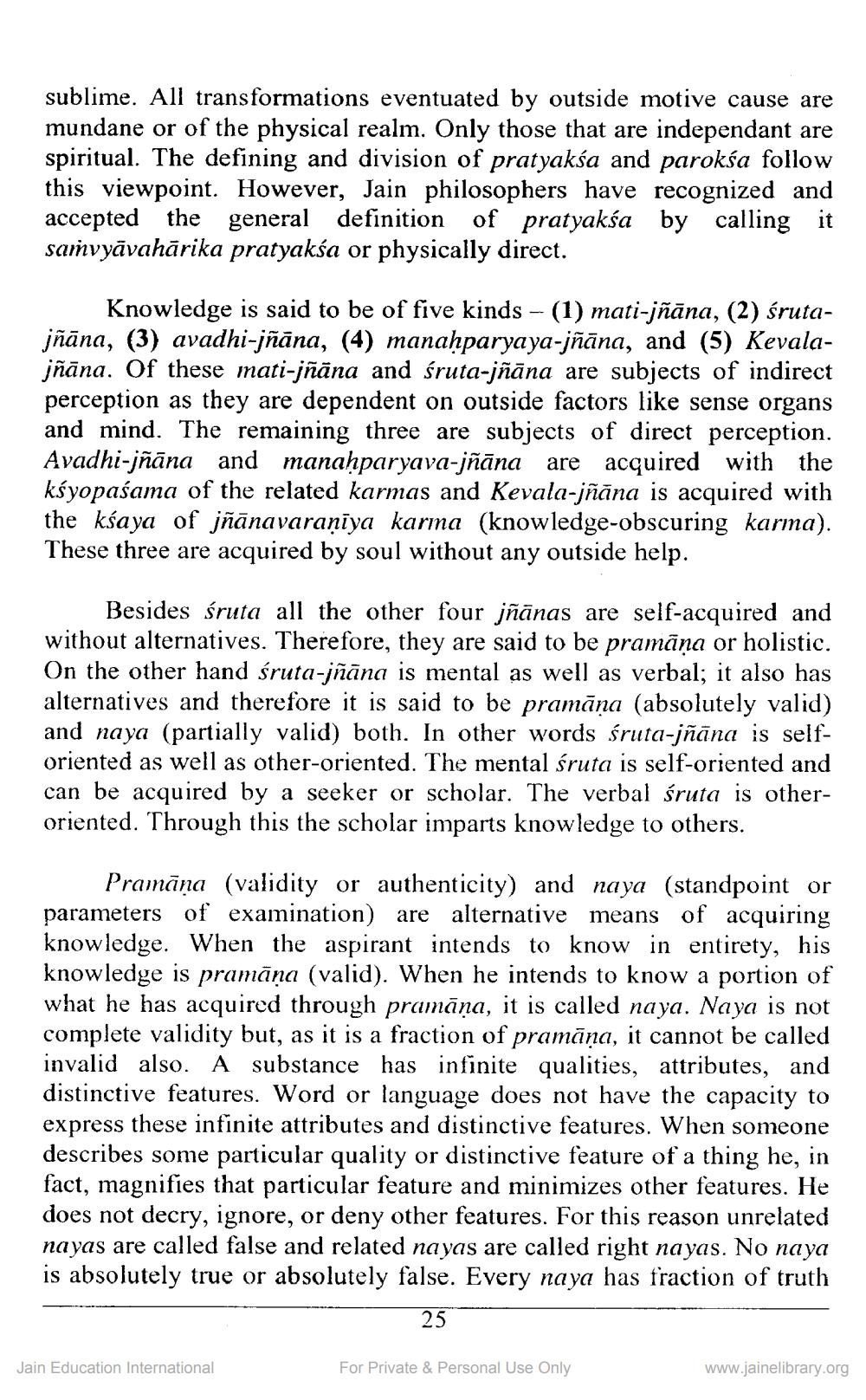________________
sublime. All transformations eventuated by outside motive cause are mundane or of the physical realm. Only those that are independant are spiritual. The defining and division of pratyaksa and paroksa follow this viewpoint. However, Jain philosophers have recognized and accepted the general definition of pratyaksa by calling it samvyāvahārika pratyaksa or physically direct.
Knowledge is said to be of five kinds -- (1) mati-jñāna, (2) śrutajñāna, (3) avadhi-jñāna, (4) manahparyaya-jñāna, and (5) Kevalajñāna. Of these mati-jñāna and śruta-jñāna are subjects of indirect perception as they are dependent on outside factors like sense organs and mind. The remaining three are subjects of direct perception. Avadhi-jñāna and manaḥparyava-jñāna are acquired with the kśyopaśama of the related karmas and Kevala-jñāna is acquired with the kśaya of jñānavaraṇīya karma (knowledge-obscuring karma). These three are acquired by soul without any outside help.
Besides śruta all the other four jñānas are self-acquired and without alternatives. Therefore, they are said to be pramāņa or holistic. On the other hand śruta-jñāna is mental as well as verbal; it also has alternatives and therefore it is said to be pramāņa (absolutely valid) and naya (partially valid) both. In other words śruta-jñāna is selforiented as well as other-oriented. The mental śruta is self-oriented and can be acquired by a seeker or scholar. The verbal śruta is otheroriented. Through this the scholar imparts knowledge to others.
Pramāņa (validity or authenticity) and naya (standpoint or parameters of examination) are alternative means of acquiring knowledge. When the aspirant intends to know in entirety, his knowledge is pramāņa (valid). When he intends to know a portion of what he has acquired through pramāņa, it is called naya. Naya is not complete validity but, as it is a fraction of pramāņa, it cannot be called invalid also. A substance has infinite qualities, attributes, and distinctive features. Word or language does not have the capacity to express these infinite attributes and distinctive features. When someone describes some particular quality or distinctive feature of a thing he, in fact, magnifies that particular feature and minimizes other features. He does not decry, ignore, or deny other features. For this reason unrelated nayas are called false and related nayas are called right nayas. No naya is absolutely true or absolutely false. Every naya has fraction of truth
25
Jain Education International
For Private & Personal Use Only
www.jainelibrary.org




